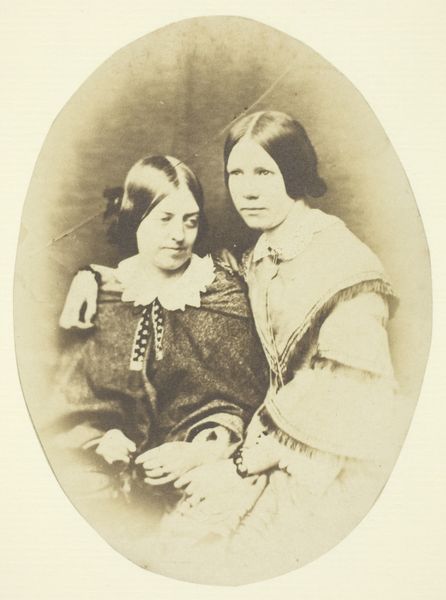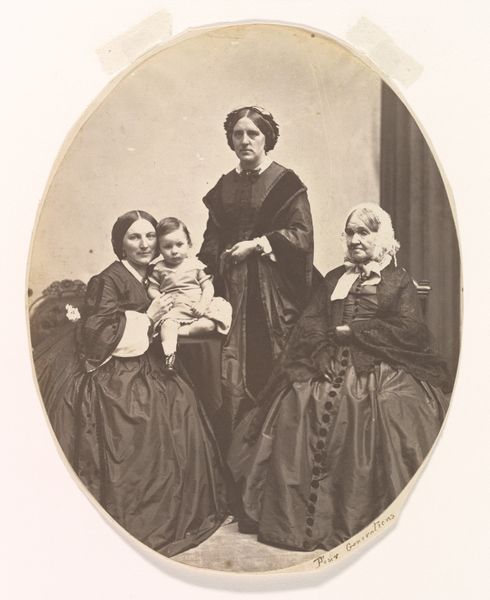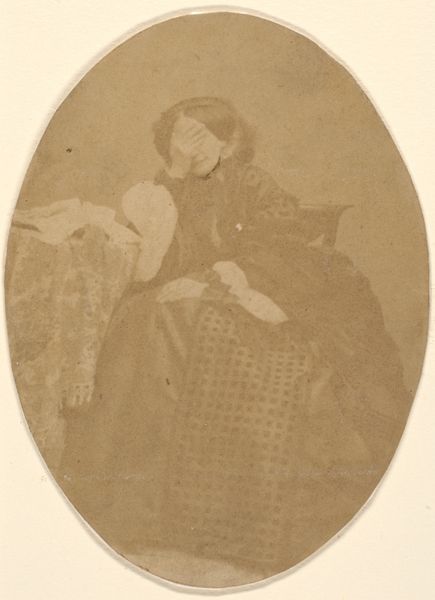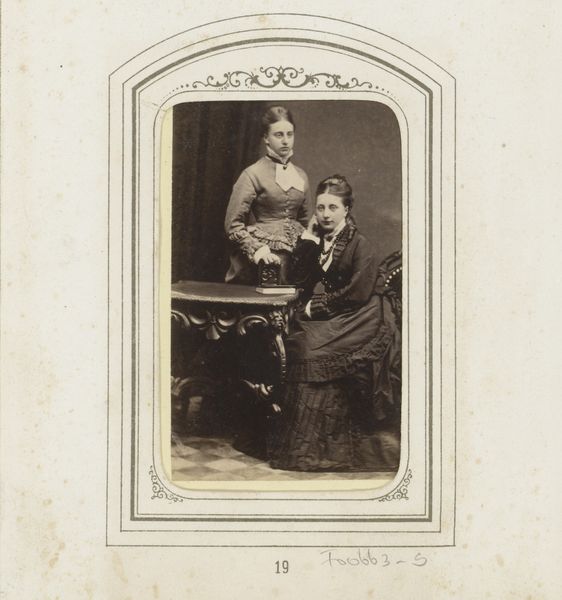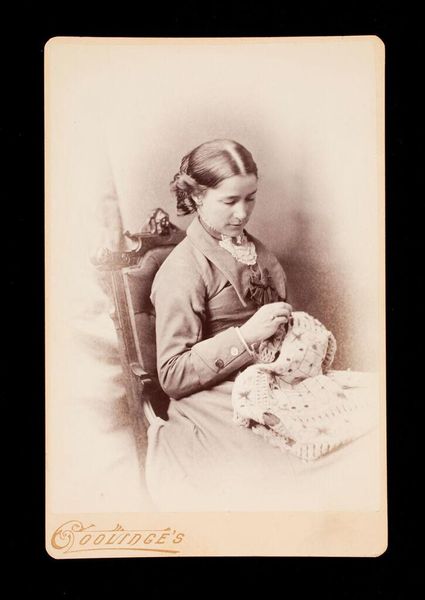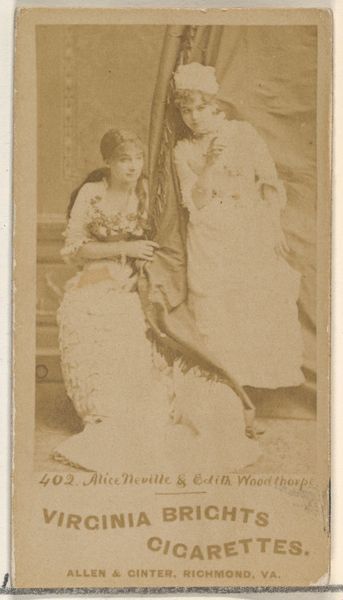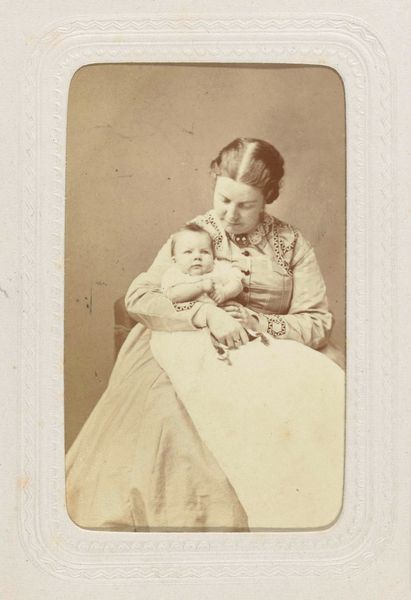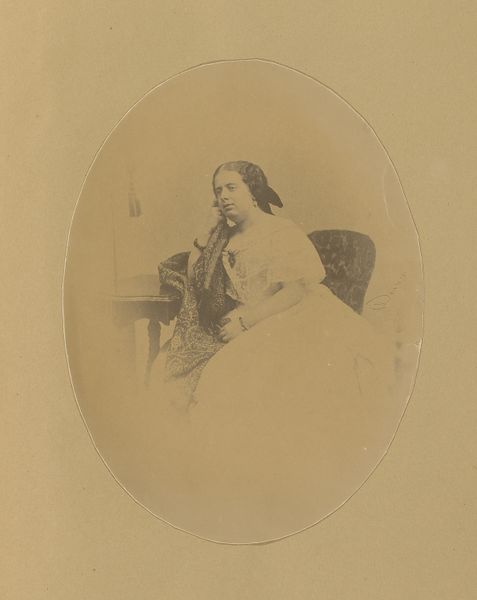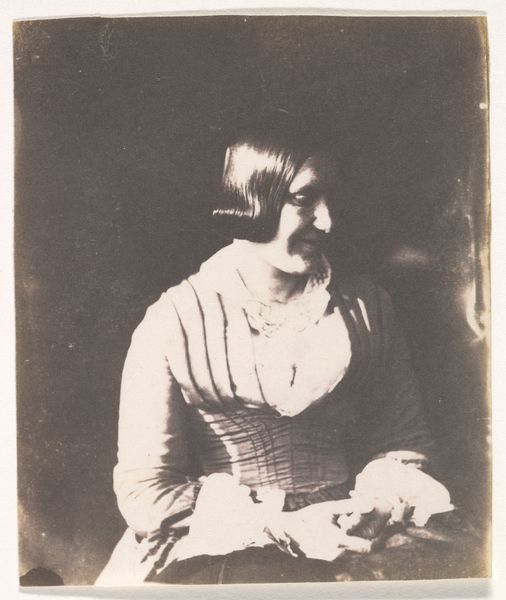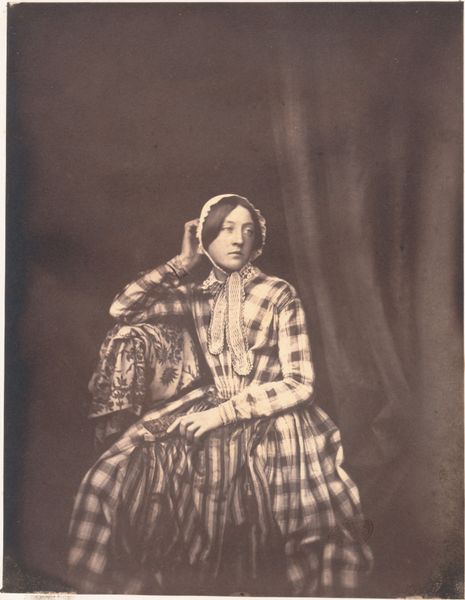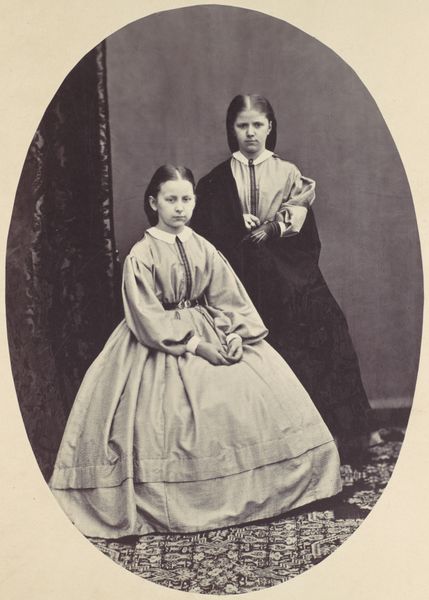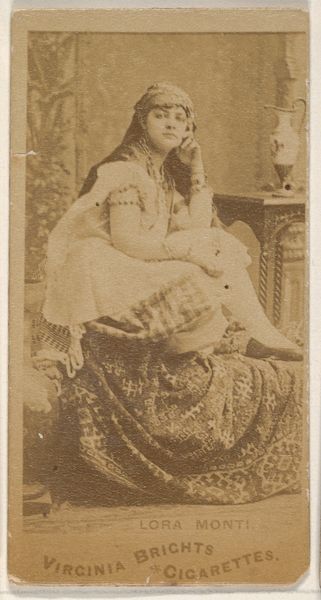
photography
#
pencil drawn
#
light pencil work
#
16_19th-century
#
pencil sketch
#
charcoal drawing
#
photography
#
pencil drawing
#
england
#
framed image
#
surrealism
#
animal drawing portrait
#
portrait drawing
#
watercolour illustration
Dimensions: 11.7 × 8.7 cm (image/paper, oval)
Copyright: Public Domain
Curator: There’s a tender quietude to this image, a sense of stillness radiating from it. It feels intensely intimate, almost like stumbling upon a secret moment. Editor: Indeed! This is an early photographic portrait, made around 1858, called "Mrs. Craik Holding Cat." It’s currently part of the collection at the Art Institute of Chicago. The photograph provides us with an important glimpse into the representation of women and their relationship to domestic animals during this historical moment in England. Curator: Oh, England…That explains the clothes! There’s something so endearingly Victorian about its reserve, isn't there? All soft light and whispered narratives. I wonder, was it taken inside or is that masterful shadow play? And look at the cat—so calm! It gives the whole thing such a sweet domestic gravity. Like a haiku composed in light and shadow. Editor: The staging here is clearly designed to convey the domestic sphere as central to female identity. These portrait studios helped to reinforce that visual message across social classes, so it matters greatly how props—including pets—are deployed. Curator: Right! It’s more than just a woman with her cat. Think about what a radical thing photography must have been at the time—capturing an image felt a little like stealing a piece of your soul! I guess now you could interpret this as them holding onto theirs—two souls intertwined, guarding their own quiet, light. Editor: The prevalence of photographic portraiture provided rising social groups an opportunity to publicly announce their identity through visual and material culture, too. What had been restricted to elites in the 18th century opened to wider audiences in the Victorian period. I think the presence of pets highlights a key component of the emergent bourgeois family structure in England. Curator: It makes you wonder about the power of a shared secret—do you think it bound the artist, sitter and the viewer in that fleeting glimpse into someone's heart? It’s more than social standing on display; you get that sense it's love itself revealed through sepia tones. Editor: Certainly, photographic portraits could function as social performances and status symbols—but it's in these small gestures that something complex opens for investigation regarding the interior life of women. The visual relationship these women establish with one another, not just how their material environment positions them socially. Curator: Looking at "Mrs. Craik Holding Cat" stirs an indescribable ache for simpler things and quiet corners...almost makes one want to just curl up with tea and one's furry familiar. It makes history feel not like dry pages from dusty books, but alive, breathing, with a gentle heartbeat of two beings intertwined, across centuries—and here we stand beholding. Editor: That's what makes this piece important and unique—not just how its form emerged from its historical context, but also in what it holds of individual humanity across eras, the things which quietly touch us, in spite of everything, even today.
Comments
No comments
Be the first to comment and join the conversation on the ultimate creative platform.
